A post that was left floating in draft limbo since mid July…
This year again the World Press Photo contest, an international competition of photojournalism, comes with its fair share of grim images of wars and crisis at the other end of the word, with pictures that talk about women suffering, immigration and children crying. It reminds us of the Haiti earthquake and of other events that have long ceased to make the headlines of the newspapers. But the contest has also cheerful pictures of women luchadores in Bolivia, high-speed car races between amateurs in Mexico and even sardines if sardines are what you’re into. There is also a surprisingly high amount of photo documenting the eruption of volcanoes. All of them far more formidable than the one that got every traveler’s attention last year.
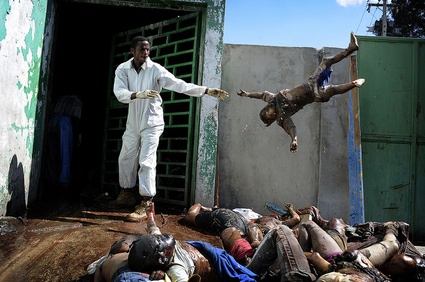 Olivier Laban-Mattei, France, Agence France-Presse, Haiti earthquake aftermath, 15 January 2010
Olivier Laban-Mattei, France, Agence France-Presse, Haiti earthquake aftermath, 15 January 2010
A man throws a corpse onto a pile of dead bodies at the morgue of a hospital in Port-au-Prince. In the aftermath of the 7.1 magnitude earthquake that struck Haiti in January, thousands of residents fled the capital Port-au-Prince.
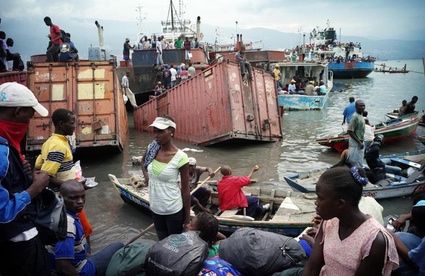 Olivier Laban-Mattei, France, Agence France-Presse, Haiti earthquake aftermath, 119 January 2010
Olivier Laban-Mattei, France, Agence France-Presse, Haiti earthquake aftermath, 119 January 2010
A Haitian family, trying to leave Port-au-Prince, boards a boat in the city harbor.
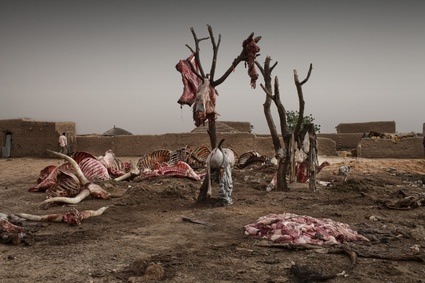 Marco Di Lauro, Niger, ‘Food Crisis’, 27 June 2010
Marco Di Lauro, Niger, ‘Food Crisis’, 27 June 2010
Entrails and skeletons of dead livestock lie in the Gadabedji reserve in the Maradi region of Niger in western Africa. Meat traders buy up dying livestock, slaughter the animals, cook the meat on the spot and sell it to neighboring Nigeria. (…) Lacking refrigeration facilities to store meat themselves, local cattle-farmers had little option but to sell their dying animals at a fraction of the usual rate and use the money to buy what food they could.
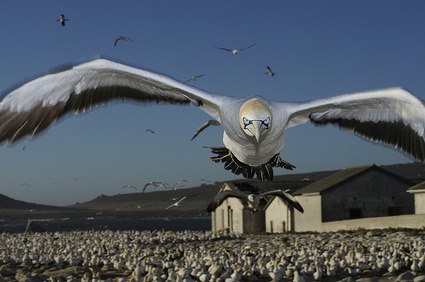 Thomas P. Peschak, Save Our Seas Foundation, Cape Gannet comes to land, Malgas Island, South Africa, 11 December 2010
Thomas P. Peschak, Save Our Seas Foundation, Cape Gannet comes to land, Malgas Island, South Africa, 11 December 2010
A Cape gannet comes in to land during the summer nesting season. Malgas Island, off the west coast of South Africa, is an important seabird breeding ground.
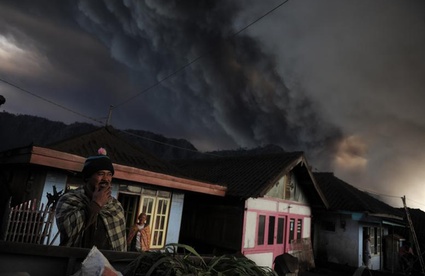 Christophe Archambault, Living in the Shadow of Mount Bromo’s Wrath, Cemoro Lawang, Indonesia, 24 December 2010
Christophe Archambault, Living in the Shadow of Mount Bromo’s Wrath, Cemoro Lawang, Indonesia, 24 December 2010
A man smokes outdoors in Cemoro Lawang, which is the main tourist access point to Mount Bromo and was badly affected by the eruption. Mount Bromo volcano, a popular tourist attraction in East Java, Indonesia, began to show signs of activity in November, with a major eruption on 19 December spewing stones and ash 2,000 meters into the air.
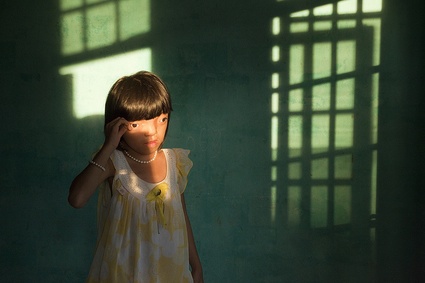 Ed Kashi, Nguyen Thi Ly, 9, suffers from Agent Orange disabilities, Da Nang, Vietnam, 09 July 2010
Ed Kashi, Nguyen Thi Ly, 9, suffers from Agent Orange disabilities, Da Nang, Vietnam, 09 July 2010
Nguyen Thi Li, aged 9, who lives in the Ngu Hanh Son district of Da Nang in Vietnam, suffers from disabilities believed to be caused by the defoliating chemical Agent Orange. During the Vietnam War, US forces sprayed Agent Orange over forests and farmland in an attempt to deprive Viet Cong guerrillas of cover and food. The dioxin compound used in the defoliant is a long-acting toxin that can be passed down genetically, so it is still having an impact forty years on. The Vietnam Red Cross estimates that some 150,000 Vietnamese children are disabled owing to their parents’ exposure to the dioxin. Symptoms range from diabetes and heart disease to physical and learning disabilities.
See the film The Leaves Keep Falling.
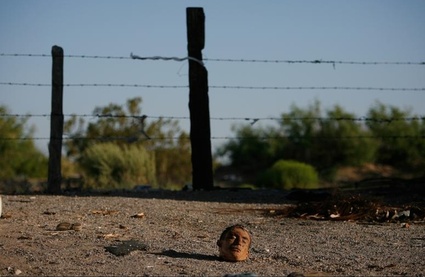 Javier Manzano, The head of a man, who was ambushed while driving with his family, lies beside the road on the outskirts of Ciudad Juarez, in northern Mexico, 02 June 2010
Javier Manzano, The head of a man, who was ambushed while driving with his family, lies beside the road on the outskirts of Ciudad Juarez, in northern Mexico, 02 June 2010
The head of a man, who was ambushed while driving with his family, lies beside the road on the outskirts of Ciudad Juarez, in northern Mexico. The city, on the border with the USA, is a smuggling crossroads and a battleground in the drug wars that afflict the region, with thousands killed each year. The man’s wife was fatally wounded by gunfire during the attack, and he was forced from the vehicle and abducted, leaving behind his children aged three and four. Police later found his body some 20 kilometers away.
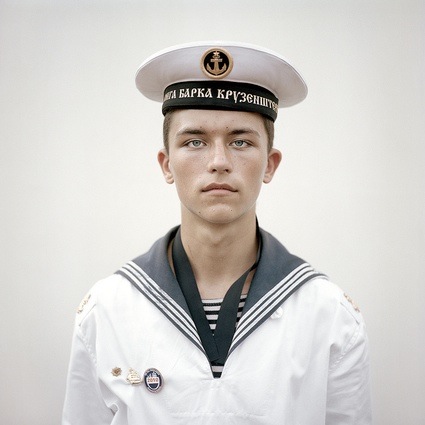 Joost van den Broek, Kirill Lewerski, cadet on Russian tall ship Kruzenshtern, 20 August 2010
Joost van den Broek, Kirill Lewerski, cadet on Russian tall ship Kruzenshtern, 20 August 2010
Kirill Lewerski, aged 16, a cadet on the Russian ship Kruzenshtern. The traditionally rigged, four-masted bark was built in 1926, the second largest tall ship still in operation.
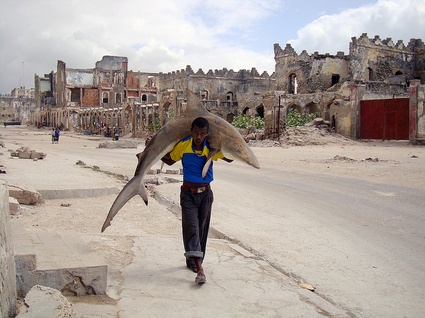 Omar Feisal, Somalia, for Reuters. Man carries a shark through the streets of Mogadishu, Somalia, 23 September 2010
Omar Feisal, Somalia, for Reuters. Man carries a shark through the streets of Mogadishu, Somalia, 23 September 2010
A man carries a shark through the streets of Mogadishu, Somalia, in September. The capital had seen some heavy shelling that month, part of the conflict between Islamist militants and pro-government troops. Sharks form a large portion of total Somali fish landings. The fish is not commonly eaten in Somalia, but shark meat is dried and salted for export.
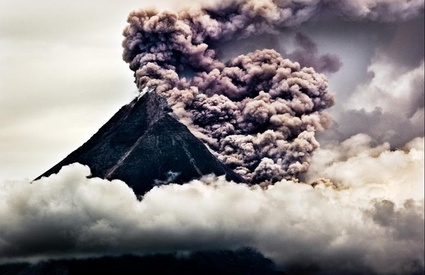 Kemal Jufri, Wrath of the Fire Mountain, Yogyakarta, Java, Indonesia, 01 November 2010
Kemal Jufri, Wrath of the Fire Mountain, Yogyakarta, Java, Indonesia, 01 November 2010
Mount Merapi, in Central Java, Indonesia, erupted in late October, blasting hot rock and volcanic ash a kilometer and a half into the air, in what was said to be its largest eruption since the 1870s. Days after the initial eruption came an even bigger blast, releasing pyroclastic flows – fast-moving currents of gas that can reach 1,000°C – which wiped out surrounding villages, even killing people outside the denoted danger zones.
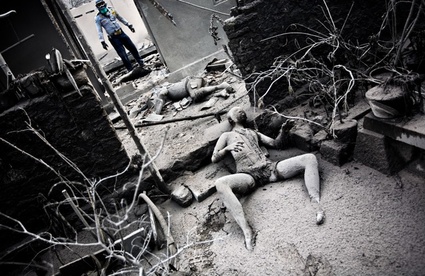 Kemal Jufri, Wrath of the Fire Mountain, Yogyakarta, Java, Indonesia, 05 November 2010
Kemal Jufri, Wrath of the Fire Mountain, Yogyakarta, Java, Indonesia, 05 November 2010
Bodies of victims of the Merapi eruption lie covered in volcanic ash in a house in the village of Argomulyo.
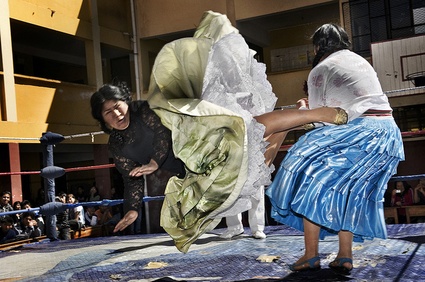 Daniele Tamagni, The Flying Cholitas, Goddesses of the Ring, Bolivia, 26 June 2010
Daniele Tamagni, The Flying Cholitas, Goddesses of the Ring, Bolivia, 26 June 2010
Lucha libre (Bolivian wrestling) is one of the most popular sports in the country. Women wrestlers are known as cholitas and have in the last ten years become popular in the sport. Here, Carmen Rosa and Yulia la Pacena perform in a benefit show to raise money for the bathrooms of a school in La Paz, Bolivia, 26 June.
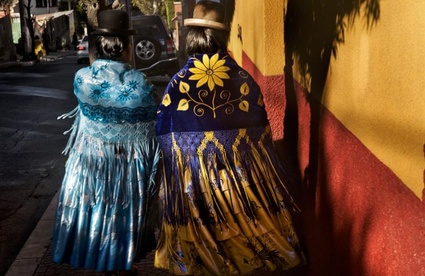 Daniele Tamagni, The Flying Cholitas, Goddesses of the Ring, Bolivia, 23 June 2010
Daniele Tamagni, The Flying Cholitas, Goddesses of the Ring, Bolivia, 23 June 2010
Carmen Rosa walks along the street with Julia la Paceña, her best friend in real life, and her ‘best enemy’ in the ring.
Btw, The Fighting Cholitas, a documentary by Mariam Jobrani and Kenny Kraus, shows the ladies in action.
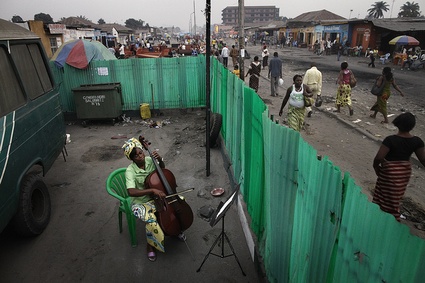 Andrew McConnell, Kinshasa, Democratic Republic of Congo, 23 July 2010
Andrew McConnell, Kinshasa, Democratic Republic of Congo, 23 July 2010
Joséphine Nsimba Mpongo, 37, practices the cello in the Kimbanguiste neighborhood of Kinshasa, Democratic Republic of Congo. She is a member of the Orchestre Symphonique Kimbanguiste (OSK), Central Africa’s only symphony orchestra. During the day, Joséphine sells eggs in Kinshasa’s main market, and rehearses with the orchestra most evenings during the week. Most of the OSK players are self-taught amateurs who hold down day jobs all over the city.
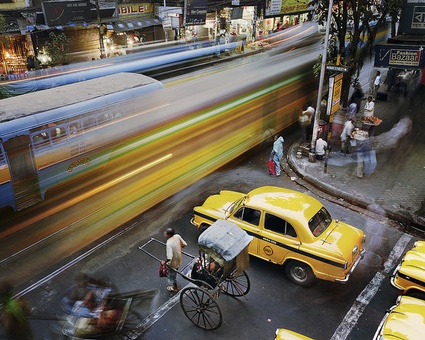 Martin Roemers, Metropolis, Mumbai, India, 09 January 2008
Martin Roemers, Metropolis, Mumbai, India, 09 January 2008
Half of humanity now lives in a city, and the United Nations has predicted that 70 percent of the world’s population will reside in urban areas by 2050.
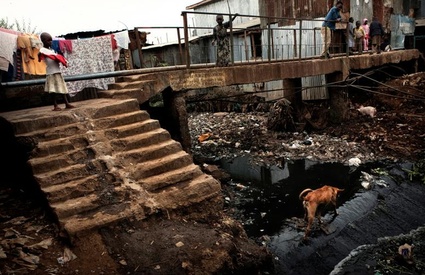 Sarah Elliott, Poor Choices, Kibera, Nairobi, Kenya, 9 August 2010
Sarah Elliott, Poor Choices, Kibera, Nairobi, Kenya, 9 August 2010
A garbage dump where aborted fetuses are frequently discarded. Abortion is a crime in Kenya, unless the life of the mother is in danger. Penalties run up to seven years in prison for a woman trying to procure a termination and twice as long for anyone conducting one. Women from richer classes can afford the € 60-80 it costs to have an abortion secretly performed by a compliant professional in a proper clinic. Poorer women have to rely on backstreet establishments, where untrained practitioners terminate pregnancies using knitting needles, bleach, malaria pills and other non-medical methods. Each year, at least 2,600 Kenyan women die after illegal abortions and 21,000 are hospitalized with complications from unsafe procedures.
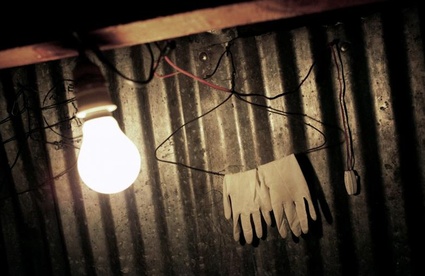 Sarah Elliott, Poor Choices, Kibera, Nairobi, Kenya, 11 August 2010
Sarah Elliott, Poor Choices, Kibera, Nairobi, Kenya, 11 August 2010
Latex gloves hang up to dry after being used and then washed. The gloves are re-used to save money.
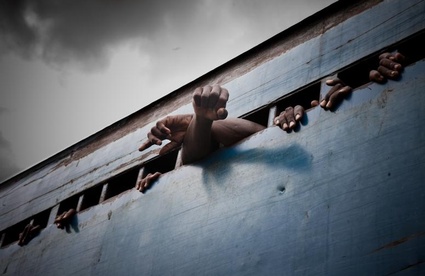 Fernando Moleres, Juveniles Behind Bars in Sierra Leone, Freetown, Sierra Leone, 09 August 2010
Fernando Moleres, Juveniles Behind Bars in Sierra Leone, Freetown, Sierra Leone, 09 August 2010
Pademba Road Prison, in Freetown, Sierra Leone was built to accommodate around 300 prisoners, but now holds more than 1,100, including many juveniles. According to Sierra Leonean law, children under 17 should not be imprisoned with adults, but poor documentation means that it is not always easy to prove age. Youths can remain in jail for years while awaiting trial, as in some cases age must be proven before a trial can commence.
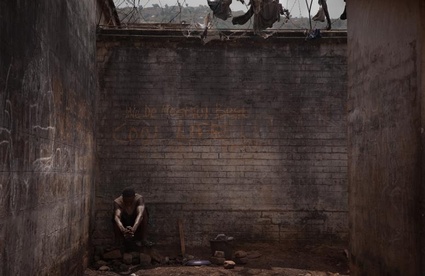 Fernando Moleres, Juveniles Behind Bars in Sierra Leone, Freetown, Sierra Leone, 28 February 2010
Fernando Moleres, Juveniles Behind Bars in Sierra Leone, Freetown, Sierra Leone, 28 February 2010
A bucket at one end of the courtyard serves as latrine for the 240 remand inmates.
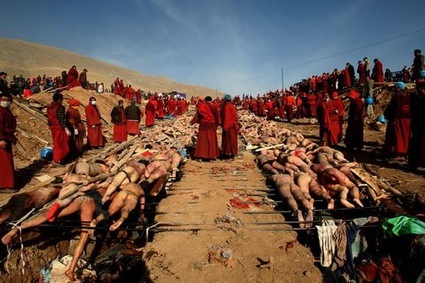 Guang Niu, Golmud, Qinghai, China, 17 April 2010
Guang Niu, Golmud, Qinghai, China, 17 April 2010
Tibetan monks prepare for the mass cremation of earthquake victims on a mountaintop in Yushu county, Qinghai province, in China. A 6.9 magnitude earthquake struck the province on 14 April, killing over 2,600 people and injuring some 12,000 more. Tibetans usually practice sky burial, leaving corpses out for vultures, but the sheer numbers of dead in this case forced the monks to abandon tradition.
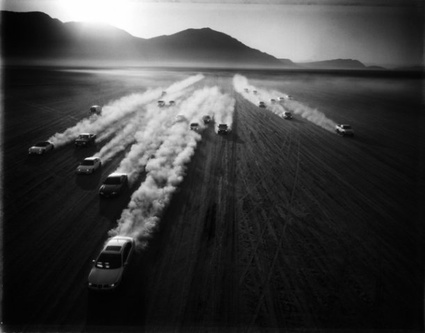 Tomasz Gudzowaty, Mexico’s Car Frenzy, Laguna de Sayula, Mexico, 08 December 2010
Tomasz Gudzowaty, Mexico’s Car Frenzy, Laguna de Sayula, Mexico, 08 December 2010
The even, hard surface of Laguna de Sayula, a dried-up salt lake in western Mexico, proves an ideal location for a spontaneous high-speed race between amateurs. A small community of motor enthusiasts in Mexico devote much of their spare time to restoring, fine-tuning and customizing their cars before meeting for informal races. City streets, highways, parking lots and even indoor spaces become locations for spontaneous races.
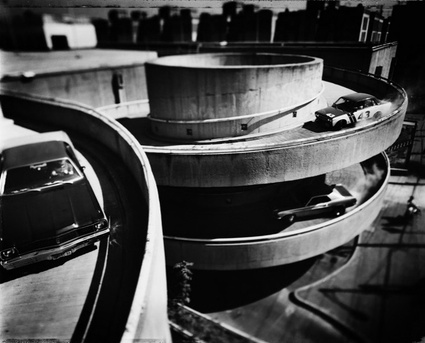 Tomasz Gudzowaty, Mexico’s Car Frenzy, Laguna de Sayula, Mexico, 07 December 2010
Tomasz Gudzowaty, Mexico’s Car Frenzy, Laguna de Sayula, Mexico, 07 December 2010
Fernando Javier de la Barrera Angulo, in a 1967 Chrysler Plymouth Barracuda, races Raul Rosas Cano, in a 1972 Nissan Datsun, and Aaron Cervantez Flores, in a 1969 Ford Mustang.
The prize-winning photographs are touring in an exhibition that opens in 45 countries over the course of a year. Right now the show is in Cologne, Wellington, Portimão, Arrecife, Edinburgh, Seoul, Naarden, Ottawa and New York. Check out where it will be traveling in the coming months.
